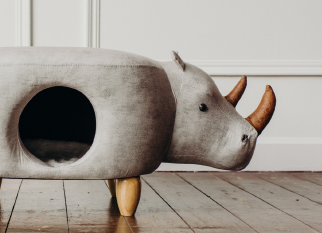What are the advantages of the multi-layer structure design of rubber cord and cable
In modern electrical and mechanical applications, rubber cord and cables play an indispensable role. Their multi-layer structural design not only improves the overall performance of the product, but also ensures reliability and safety under various environmental conditions.
Improved mechanical strength
The significant advantage of the multi-layer structural design is that it significantly enhances the mechanical strength of rubber cord and cables. The construction of cables usually includes a conductor layer, an insulation layer, and a sheath layer, each of which performs a specific function.
Conductor layer: This layer is usually made of copper or aluminum and is mainly responsible for the conduction of current. Increasing the cross-sectional area of the conductor can significantly increase the tensile strength of the cable, thereby reducing the risk of damage during stretching or bending.
Insulation layer: High-performance rubber materials are used to provide electrical insulation protection to prevent current leakage and short circuits. The thickness of the insulation layer and the material selection directly affect the voltage resistance of the cable, ensuring safe use in high-voltage environments.
Sheath layer: The outer rubber sheath not only provides mechanical protection, but also effectively resists chemical corrosion and the influence of the external environment. Through the multi-layer design, the internal structure of the cable is protected when it is subjected to external force impact, avoiding functional failure caused by external damage.
This multi-layer design enables rubber cord and cables to maintain stability in high-intensity and high-load environments, thereby extending their service life.
Superior waterproof performance
In many application scenarios, waterproof performance is an important indicator of rubber cord and cables. The multi-layer structure design enables the cable to effectively resist the intrusion of moisture.
Sealing: The sheath layer uses a highly sealed rubber material, which can effectively prevent moisture penetration. Through reasonable joint design and sealing process, the cable can be ensured to work normally in a humid environment.
Waterproof test: The multi-layer structure design enables the cable to pass a variety of waterproof performance tests to ensure that it can resist the intrusion of moisture in actual applications and protect the integrity of the internal conductor and insulation layer.
Superior waterproof performance makes rubber cord and cables widely used in underwater, humid or rainy environments, such as ships, irrigation systems and outdoor electrical equipment.
Strong weather resistance
Rubber cord and cables usually need to work in outdoor environments, so their weather resistance is particularly important. The multi-layer structure design not only enhances the weather resistance of the cable, but also effectively resists the influence of ultraviolet rays, temperature changes and other climatic factors.
Anti-UV design: Anti-UV agents are added to the sheath layer to prevent aging and embrittlement caused by long-term exposure to sunlight, thereby greatly extending the service life of the cable.
Temperature adaptability: The materials at different levels are optimized and can be adapted to specific temperature ranges to ensure that the cable can still work normally under extreme climate conditions.
This excellent weather resistance allows rubber cord and cables to be widely used in many fields such as construction, agriculture, and transportation, meeting the strict requirements of different industries for electrical connections and mechanical transmission.


 English
English русский
русский 中文简体
中文简体 Español
Español













